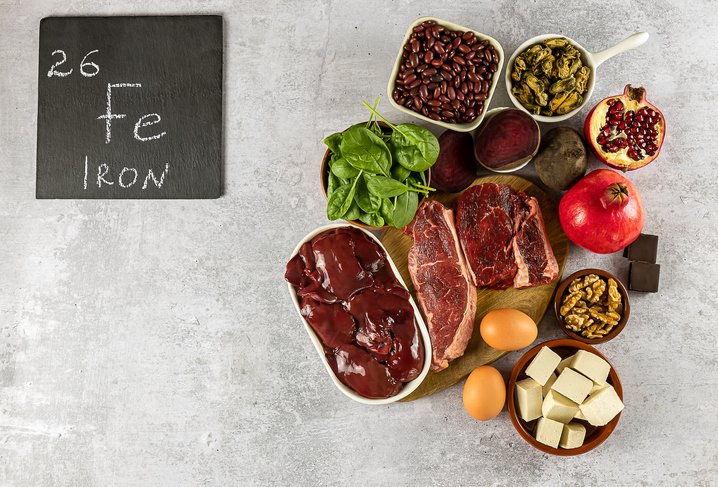Nutrition and Skin Tanning
This post is on nutrients involved with the ability to tan, not about how to tan. Furthermore, I some people tan easily, while others can’t tan. Rather, it addresses our ability to tan to the degree to which we are individually capable. If you want more information on the tanning process, read this post.
Many years ago, I used to follow the Food Pyramid, which resulted in multiple health issues. One of the symptoms I experienced was the loss of my ability to tan. Being someone who grew up near the beach, I was fond of being in the sun and getting a perfect tan for my skin type. However, I started feeling increasingly uncomfortable with hot weather, which was very unlike me. When I switched to The Paleo Diet, my love for sunny and hot weather returned, along with my ability to tan. I was amazed that I could tan with little exposure time and during the early season when the sun is not as strong. Once my tan returned, I also noticed that it lasted for weeks, which was different from my past. This made me curious about the nutrients in our diets that are responsible for this change. In this post, I will discuss melanin, the pigment responsible for tanning, and the nutrients that are responsible for it.
Melanin is the pigment responsible for the color of our skin, hair, and eyes. It plays a crucial role in protecting the skin from the harmful effects of ultraviolet (UV) radiation and is synthesized by melanocytes, specialized cells located in the epidermis. The process of melanin production and maintenance is influenced by a variety of nutrients, each playing a unique role in supporting skin health.
Tyrosine: The Precursor to Melanin
Tyrosine is an amino acid that serves as the precursor to melanin synthesis. It is obtained through the diet and is converted into L-DOPA in a series of enzymatic reactions. Foods rich in tyrosine include dairy products, meat, fish, nuts, seeds, and certain fruits like bananas and avocados. 1
Copper: A Cofactor for Enzymatic Reactions
Copper is an essential trace element that acts as a cofactor for the enzymes involved in the conversion of L-DOPA to melanin. It can be found in foods such as organ meats, seafood, nuts, seeds, whole grains, and legumes. 2
Vitamin C: Antioxidant Support
Vitamin C is an antioxidant that helps protect melanocytes from oxidative stress, preserving their function and preventing premature aging. Citrus fruits, strawberries, kiwi, guava, and bell peppers are excellent sources of vitamin C. 3
Vitamin E: Protection Against UV Damage
Vitamin E is another antioxidant that protects the skin from UV radiation, preventing damage to melanocytes and maintaining melanin levels. Nuts, seeds, vegetable oils, and green leafy vegetables are good sources of vitamin E. 4
Vitamin A: Regulation of Melanin Production
Vitamin A plays a role in the regulation of melanin production and helps maintain the health of the skin.
Sources of vitamin A include liver, sweet potatoes, carrots, spinach, and other dark leafy greens. 5
B Vitamins: Supporting Enzymatic Processes
B vitamins, particularly B6, B9 (folate), and B12, play roles in various enzymatic processes involved in melanin synthesis. Foods rich in B vitamins include meat, fish, poultry, eggs, dairy products, leafy greens, and fortified cereals. 1
Zinc: Enzyme Activation
Zinc is a trace mineral essential for the activation of enzymes involved in melanin synthesis. Foods high in zinc include meat, shellfish, legumes, seeds, and dairy products. 6
Iron: Oxygen Transport and Enzyme Function
Iron is necessary for oxygen transport and enzyme function, including those involved in melanin production. Good sources of iron include red meat, poultry, fish, lentils, beans, and fortified cereals. 7
Omega-3 Fatty Acids: Skin Health
Omega-3 fatty acids contribute to overall skin health, supporting the cell membrane structure and influencing melanin production. Fatty fish, flaxseeds, chia seeds, and walnuts are rich sources of omega-3 fatty acids. 8
Adequate Hydration: Maintaining Skin Health
Water is essential for overall skin health. Proper hydration supports cell function, including melanocytes, and helps maintain the skin's elasticity. Drinking an adequate amount of water each day is crucial for skin health.
Conclusion
A diet that includes a variety of nutrient-rich foods is essential for the production and maintenance of melanin in the skin. The interplay of amino acids, vitamins, minerals, and other compounds supports the complex biochemical processes involved in melanin synthesis. Additionally, adopting lifestyle habits such as moderating sun exposure and proper hydration further contributes to maintaining healthy skin and optimal melanin levels.









